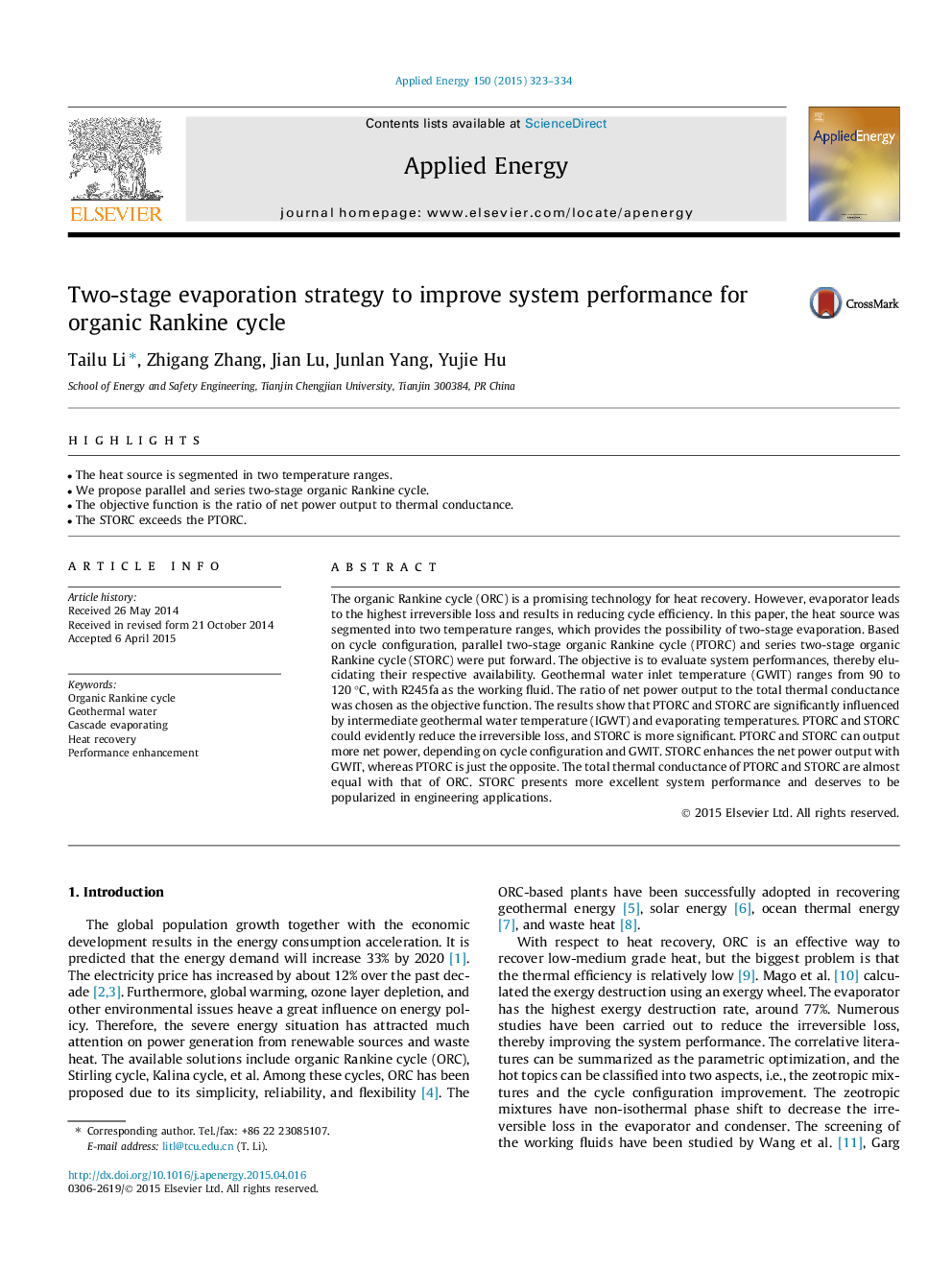| Article ID | Journal | Published Year | Pages | File Type |
|---|---|---|---|---|
| 242528 | Applied Energy | 2015 | 12 Pages |
•The heat source is segmented in two temperature ranges.•We propose parallel and series two-stage organic Rankine cycle.•The objective function is the ratio of net power output to thermal conductance.•The STORC exceeds the PTORC.
The organic Rankine cycle (ORC) is a promising technology for heat recovery. However, evaporator leads to the highest irreversible loss and results in reducing cycle efficiency. In this paper, the heat source was segmented into two temperature ranges, which provides the possibility of two-stage evaporation. Based on cycle configuration, parallel two-stage organic Rankine cycle (PTORC) and series two-stage organic Rankine cycle (STORC) were put forward. The objective is to evaluate system performances, thereby elucidating their respective availability. Geothermal water inlet temperature (GWIT) ranges from 90 to 120 °C, with R245fa as the working fluid. The ratio of net power output to the total thermal conductance was chosen as the objective function. The results show that PTORC and STORC are significantly influenced by intermediate geothermal water temperature (IGWT) and evaporating temperatures. PTORC and STORC could evidently reduce the irreversible loss, and STORC is more significant. PTORC and STORC can output more net power, depending on cycle configuration and GWIT. STORC enhances the net power output with GWIT, whereas PTORC is just the opposite. The total thermal conductance of PTORC and STORC are almost equal with that of ORC. STORC presents more excellent system performance and deserves to be popularized in engineering applications.
